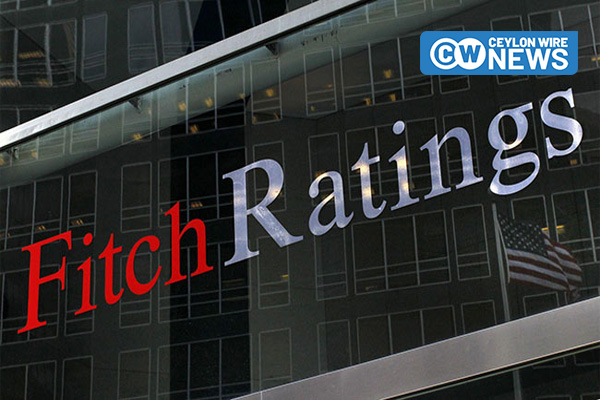Fitch Ratings has affirmed ratings on 15 Sri Lankan banks, Fitch said in a statement. The statement is given below:
Fitch Ratings – Colombo – 05 Oct 2023: Fitch Ratings has affirmed Bank of Ceylon’s (BOC) Long-Term Local-Currency Issue Default Rating (IDR) at ‘CCC-‘ and removed it from Rating Watch Negative (RWN). The Outlook is Stable.
At the same time, Fitch has affirmed the National Long-Term Ratings of the following banks, removed them from RWN and assigned Stable Outlooks:
– BOC at ‘A(lka)’
– People’s Bank (Sri Lanka) at ‘A(lka)’
– Commercial Bank of Ceylon PLC at ‘A(lka)’
– Hatton National Bank PLC at ‘A(lka)’
– Sampath Bank PLC at ‘A(lka)’
– National Development Bank PLC at ‘A-(lka)’
– Seylan Bank PLC at ‘A-(lka)’
– DFCC Bank PLC at ‘A-(lka)’
– Nations Trust Bank PLC at ‘A-(lka)’
– Pan Asia Banking Corporation PLC at ‘BBB-(lka)’
– Union Bank of Colombo PLC at ‘BBB-(lka)’
– Amana Bank PLC at ‘BB+(lka)’
– Sanasa Development Bank PLC at ‘BB+(lka)’
– Housing Development Finance Corporation Bank of Sri Lanka at ‘BB+(lka)’
Fitch has also affirmed Cargills Bank Limited’s (CBL) National Long-Term Rating at ‘A(lka)’ and removed it from RWN. Fitch has assigned a Negative Rating Outlook.
The RWN on these banks’ senior and subordinated debt ratings, where assigned, has also been removed.
BOC’s Long-Term Foreign-Currency IDR of ‘CC’, Short-Term IDR of ‘C’, Viability Rating of ‘cc’ and Government Support Rating of ‘ns’ were not considered in this review.
A full list of rating actions is at the end of this rating action commentary.
KEY RATING DRIVERS
Downside Risks to Banks Easing: The removal of the RWN on BOC’s Long-Term Local-Currency IDR and the national ratings of all the above banks reflects our view that near-term downside risks have substantially reduced as reflected in the upgrade of Sri Lanka’s Long-Term Local-Currency IDR to ‘CCC-‘ from ‘RD’. Please see Fitch Upgrades Sri Lanka’s Long-Term Local-Currency IDR to ‘CCC-‘, published 28 September 2023.
The successful conclusion of the local-currency sovereign debt restructuring, including the exclusion of banks’ holdings of treasury securities from the domestic debt optimisation programme, has alleviated some of the pressure on the banks’ capital positions from weakening loan quality and rupee depreciation as well as any immediate funding and liquidity stresses.
Manageable Risks from Foreign-Currency Bonds: The restructuring of Sri Lanka’s foreign-currency debt, including the defaulted sovereign bonds that banks hold, has not been completed, but we believe that incremental risks to banks’ capital from the restructuring are likely to be manageable, given their limited exposure to these bonds (3.6% of total assets at end-1H23) and high provision coverage. That said, access to foreign-currency wholesale funding remains challenged by the sovereign’s weak credit profile, but the stress on banks’ foreign-currency liquidity has largely eased relative to the crisis period.
Negative Outlook on CBL: The Negative Outlook on CBL’s national rating reflects downside risks from its increasing size relative to that of its ultimate parent, CT Holdings PLC (CTH), which could constrain the parent’s ability to provide extraordinary support in times of need. At end-1H23, the bank’s assets accounted for 193% of group equity and 51% of group assets.
The removal of parental support considerations due to rising relative size could result in a downgrade of CBL’s rating to a level that reflects its standalone credit strength. Fitch views this to be significantly weaker than the support-driven rating of ‘A(lka)’ due to its weak financial profile and small and developing franchise.
RATING SENSITIVITIES
Factors that Could, Individually or Collectively, Lead to Negative Rating Action/Downgrade
BOC’s Long-Term Local-Currency IDR
Fitch would downgrade BOC’s Long-Term Local-Currency IDR if we perceive there is an increased likelihood that the bank would default on or seek a restructuring of its local-currency denominated senior obligations to non-government creditors.
National ratings of all banks, except CBL
A deterioration in the banks’ key credit metrics beyond our base-case expectations relative to peers could trigger a downgrade on the banks’ ratings, which are driven by their intrinsic financial strength.
National rating of CBL
CBL’s rating is sensitive to changes in CTH’s credit profile as well as Fitch’s opinion around the ability or propensity of CTH to extend timely extraordinary support. A continued increase in CBL’s balance sheet relative to that of CTH that makes extraordinary support more onerous for the parent, could lead to a multiple-notch downgrade in CBL’s national rating to reflect its standalone credit strength.
Factors that Could, Individually or Collectively, Lead to Positive Rating Action/Upgrade
BOC’s Long-Term Local-Currency IDR
An upgrade of BOC’s Long-Term Local-Currency IDR would most likely result from an improvement in Sri Lanka’s operating environment, which could occur after the successful completion of the restructuring of the remainder of the foreign-currency sovereign debt.
National ratings of all banks, except CBL
Positive rating action on the sovereign may lead to an upgrade in the banks’ ratings. A sustained improvement in the banks’ key credit metrics beyond our base-case expectations relative to peers, could also lead to an upgrade of the banks’ ratings.
National rating of CBL
There is limited upside potential given the Negative Outlook on the bank’s national rating.
BOC and PB have a 1.78% equity stake each in Fitch Ratings Lanka Ltd. No shareholder other than Fitch, Inc. is involved in the day-to-day rating operations of, or credit reviews undertaken by, Fitch Ratings Lanka Ltd.
OTHER DEBT AND ISSUER RATINGS: KEY RATING DRIVERS
RWN Removed on Senior Debt Ratings: Fitch has also taken corresponding rating action on the banks’ national scale senior debt ratings, where assigned. Sri Lanka rupee-denominated senior debt, where applicable, is rated at the same level as the banks’ National Long-Term Ratings in accordance with Fitch’s criteria. This is because the issues rank equally with the claims of the banks’ other senior unsecured creditors.
SUBORDINATED DEBT
The removal of the RWN on the banks’ outstanding and proposed subordinated debt, where applicable, corresponds to the action taken on these banks’ national ratings. Sri Lanka rupee-denominated subordinated debt, where applicable, is rated two notches below banks’ National Long-Term Ratings. This is in line with our baseline notching for loss severity for this type of debt and our expectations of poor recovery.
OTHER DEBT AND ISSUER RATINGS: RATING SENSITIVITIES
Senior and subordinated debt ratings will move in tandem with the National Long-Term Rating
REFERENCES FOR SUBSTANTIALLY MATERIAL SOURCE CITED AS KEY DRIVER OF RATING
The principal sources of information used in the analysis are described in the Applicable Criteria.
PUBLIC RATINGS WITH CREDIT LINKAGE TO OTHER RATINGS
CBL’s National Long-Term Rating is driven by support from its ultimate parent, CTH.
ESG CONSIDERATIONS
BOC has an ESG Relevance Score of ‘4’ for Governance Structure due to ownership concentration, with a 100% state shareholding and several related-party transactions with the state and state-owned entities, which has a negative impact on the credit profile and is relevant to the rating in conjunction with other factors.
BOC has an ESG Relevance Score of ‘4’ for Financial Transparency. It reflects our view that the recent regulatory forbearance measures announced by the Central Bank of Sri Lanka could distort the true solvency and liquidity position of the bank, thereby limiting financial transparency. This has a negative impact on the credit profile and is relevant to the rating in conjunction with other factors.
Unless otherwise disclosed in this section, the highest level of ESG credit relevance is a score of ‘3’. This means ESG issues are credit neutral or have only a minimal credit impact on the entity, either due to their nature or the way in which they are being managed by the entity. Fitch’s ESG Relevance Scores are not inputs in the rating process; they are an observation on the relevance and materiality of ESG factors in the rating decision.









